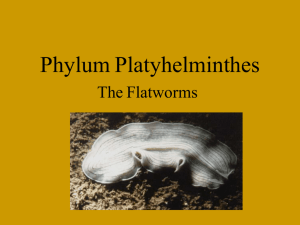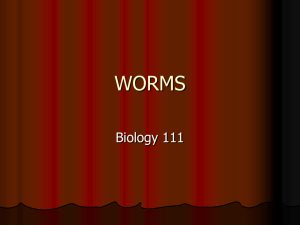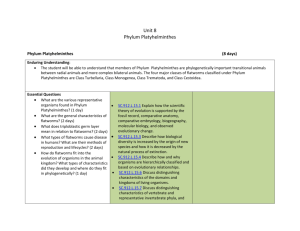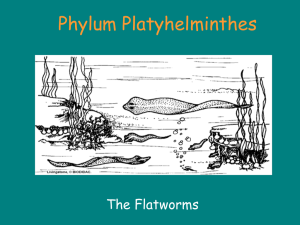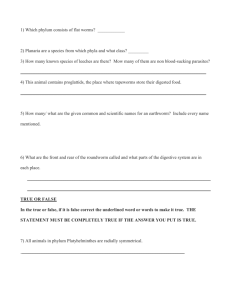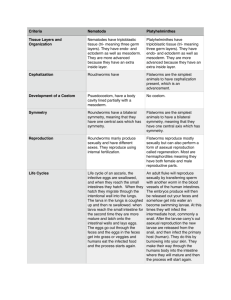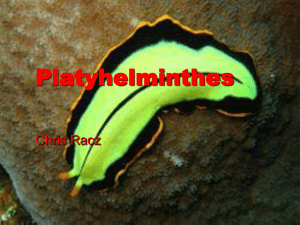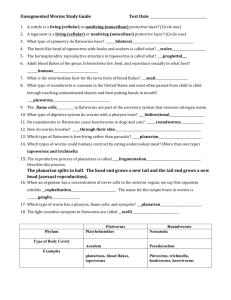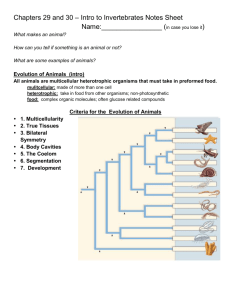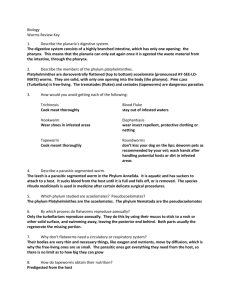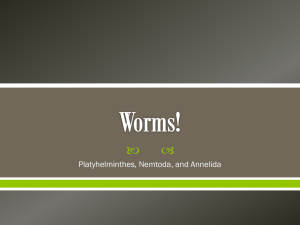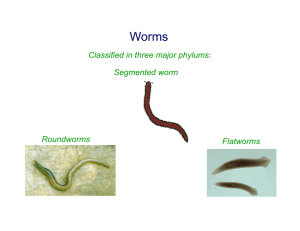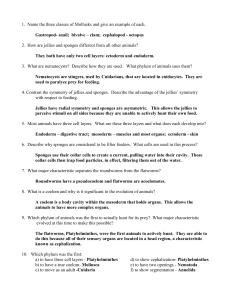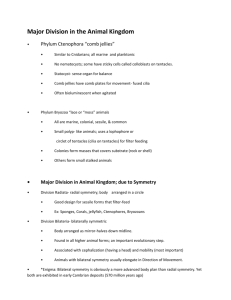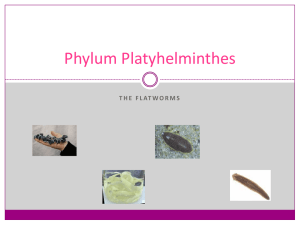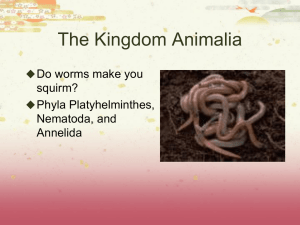View/Open
advertisement
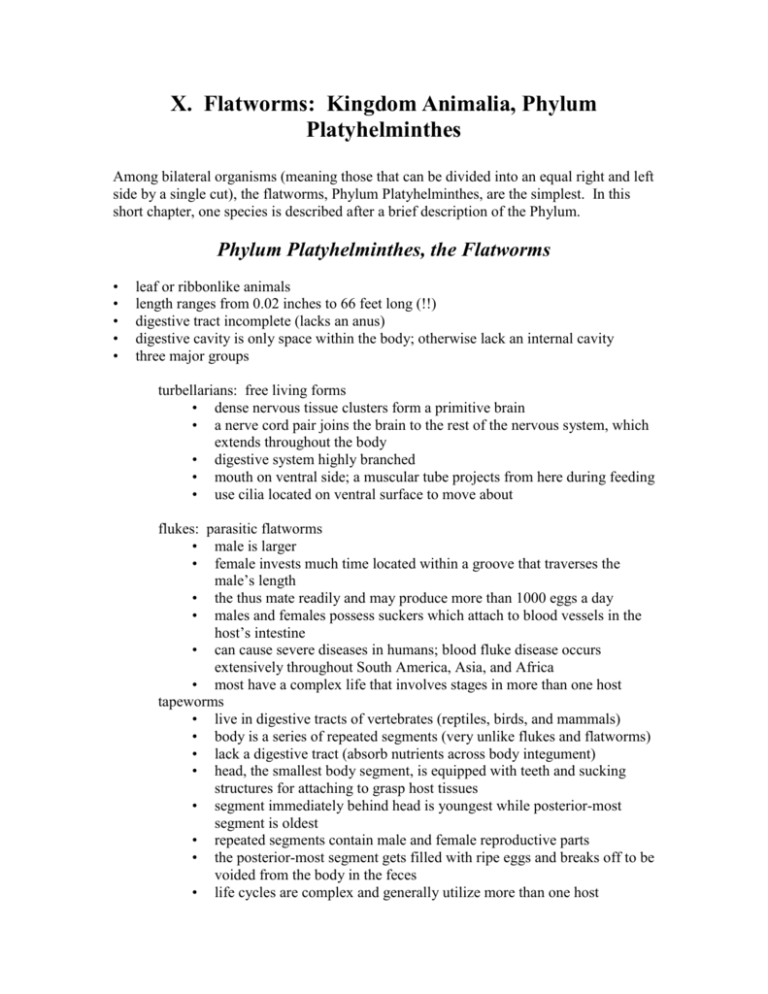
X. Flatworms: Kingdom Animalia, Phylum Platyhelminthes Among bilateral organisms (meaning those that can be divided into an equal right and left side by a single cut), the flatworms, Phylum Platyhelminthes, are the simplest. In this short chapter, one species is described after a brief description of the Phylum. Phylum Platyhelminthes, the Flatworms • • • • • leaf or ribbonlike animals length ranges from 0.02 inches to 66 feet long (!!) digestive tract incomplete (lacks an anus) digestive cavity is only space within the body; otherwise lack an internal cavity three major groups turbellarians: free living forms • dense nervous tissue clusters form a primitive brain • a nerve cord pair joins the brain to the rest of the nervous system, which extends throughout the body • digestive system highly branched • mouth on ventral side; a muscular tube projects from here during feeding • use cilia located on ventral surface to move about flukes: parasitic flatworms • male is larger • female invests much time located within a groove that traverses the male’s length • the thus mate readily and may produce more than 1000 eggs a day • males and females possess suckers which attach to blood vessels in the host’s intestine • can cause severe diseases in humans; blood fluke disease occurs extensively throughout South America, Asia, and Africa • most have a complex life that involves stages in more than one host tapeworms • live in digestive tracts of vertebrates (reptiles, birds, and mammals) • body is a series of repeated segments (very unlike flukes and flatworms) • lack a digestive tract (absorb nutrients across body integument) • head, the smallest body segment, is equipped with teeth and sucking structures for attaching to grasp host tissues • segment immediately behind head is youngest while posterior-most segment is oldest • repeated segments contain male and female reproductive parts • the posterior-most segment gets filled with ripe eggs and breaks off to be voided from the body in the feces • life cycles are complex and generally utilize more than one host • some species can reach 66 feet in the human intestine 1. Flatworm, Kaburakia excelsa Kingdom Animalia Phylum Platyhelminthes Class Turbellaria Order Polycladida Family Stylochidae Genus Kaburakia Occurrence ................................... • • Form/Function ............................. • • • • Reproduction ............................... • Predators/Prey .......................... • • Noteworthy Facts ……………… • Alaska to southern California low intertidal to 4 inches long and 2.8 inches wide when active and extended nuchal tentacles large, retractile, and bearing eyes inside at the base marginal eyes occurring around entire perimeter of body tan color, heavily imprinted with uniformly distributed dark-brown, dash-like markings, which gives the entire body a bluish hue in Washington, gravid individuals have been identified in March 150 – 160 golden eggs are laid in capsules as a mono- or bilayer on rocks carnivorous; feeds on ascidians, polychaete worms, crustaceans, and mollusks one of the largest coastal flatworms


